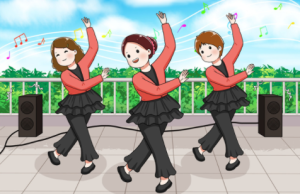Square Dancing: A Treasure of Our Society That Should Not Be Forbidden
- 广场舞百科
- 2024-04-03 13:48:22
- 41
Content:

Square dancing, as a traditional cultural activity in China, has been gaining immense popularity in recent years. It is not merely a form of exercise, but also a symbol of community cohesion and cultural heritage. The topic of whether square dancing should be forbidden has sparked intense debates. I am firmly against such a prohibition, and here are my reasons.
Firstly, square dancing are an integral part of Chinese culture, especially for the elderly. It allows them to stay active, both physically and socially. In our fast-paced society, where many elderly people often feel isolated, square dancing provides them with a sense of belonging and camaraderie. It is a way for them to connect with their peers, share life experiences, and keep their spirits high. Prohibiting square dancing would deprive them of this valuable social interaction.
Secondly, square dancing promotes physical health. The rhythmic movements and music help improve cardiovascular fitness, flexibility, and coordination. It is an accessible and low-cost form of exercise that caters to people of all ages and fitness levels. With the increasing health concerns among the population, square dancing serves as a fun and effective way to encourage more people to engage in physical activities.
Furthermore, square dancing contributes to the preservation of traditional culture. Many of the dances performed are based on folk traditions and historical events, passed down through generations. By participating in square dances, people are not only enjoying themselves, but also keeping these cultural traditions alive. Banning square dancing would mean losing touch with our cultural roots.
However, it is important to address the concerns raised by those supporting the prohibition of square dancing. The loud music and noise pollution have indeed caused disturbances to residents living near the dancing venues. This issue can be resolved through better management and regulation. For instance, setting specific times and places for square dancing, and enforcing noise regulations can minimize the impact on local residents.
Moreover, the popularity of square dancing has led to the emergence of square dance groups and competitions, fostering a sense of competition and teamwork. This encourages people to work together, improve their skills, and strive for excellence. It is an excellent platform for showcasing talent and building confidence.
In conclusion, square dancing plays a vital role in our society. It promotes physical and mental health, fosters social connections, preserves cultural heritage, and encourages community engagement. Instead of prohibiting it, we should focus on effective management and regulation to address the concerns raised by its impact on local communities.
To simply forbid square dancing would be a great loss to our society. It is a treasure that we should cherish and protect. Let us work together to create a harmonious environment where square dancing can continue to thrive, bringing joy and health to the people of our great nation.
免责声明:本网站上的所有文章内容均来自互联网。本网站仅在法律允许的范围内使用、分享和传播这些内容,不违反任何版权或知识产权法。如发现本站有涉嫌抄袭侵权/违法违规的内容,请发送邮件25538@qq.com举报,一经查实,本站将立刻删除。
本文链接:https://www.zhuangrou.com/gcw/5280.html



















